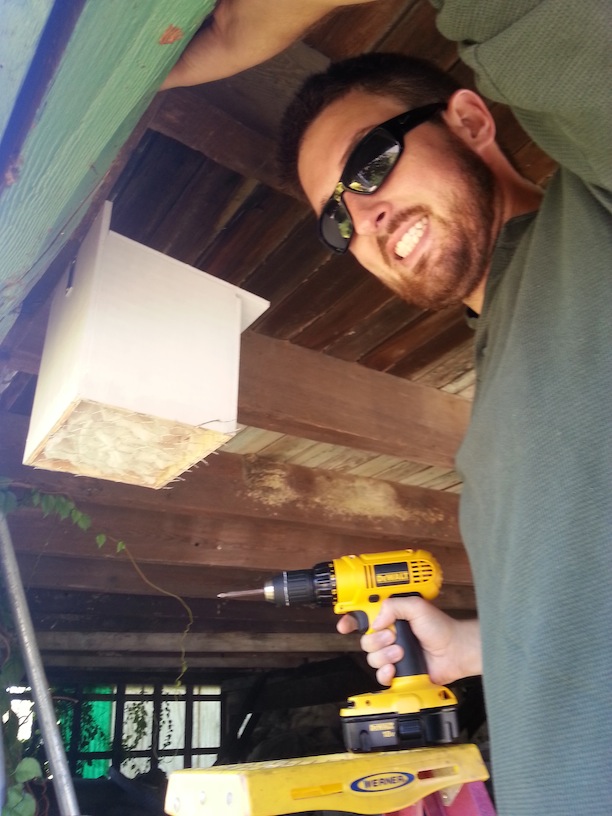Trap cropping and habitat manipulation
Trap crops are a core tactic for managing insects through habitat manipulation. The development of successful BMSB trap crop tactics will depend on knowledge of BMSB host selection and dispersal behaviors to retard or prevent their movement into cash crops. The characteristic movement of BMSB from overwintering sites to crops and among crops makes this pest ideally suited to management by trap crops.
Sunflower trap crop study to assess different managnement techniques of a trap crop for BMSB (Bridgeton, NJ).
Looking for BMSB on sunflowers to determine their effectiveness as a trap crop (Kutztown, PA).
Pollenless sunflowers planted adjacent to bell peppers to act as a trap crop to keep BMSB off of the peppers (photo by Taliaferro Trope).
Assessing bell pepper damage from BMSB by using different treatments of sunflowers and sweet corn on border rows (photo by Taliaferro Trope).
Early stage of using pollenless sunflowers as a trap crop for BMSB planted between successional plantings of sweet corn (photo by Taliaferro Trope).
Adult BMSB on sweet corn tassles in Rappahannock Co., VA (photo by Taliaferro Trope).
Coreopsis and pollenless sunflowers planted around the perimeter of a hoop house with heirloom tomatoes to attract BMSB away from the tomatoes and keep them from entering the hoop house (photo by Taliaferro Trope).

An excited graduate student installs a BMSB overwintering box in a barn at a farm in Williamstown, NJ. The overwintering box is designed to attract and hold adult BMSB that are looking for an overwintering site in the Fall instead of the bugs inhabiting the rest of the barn. The box also allows us to easily remove the stink bugs from the barn, which helps eliminate bugs that will emerge the following spring.
A similar overwintering box from above. This box is mounted on a large dead tree as a method for collecting adult BMSB that are seeking out natural (the tree) overwintering habitats (Bridgeton, NJ).
Project Funding

This project was funded in 2012 by the Organic Research and Extension Initiative grant, part of the USDA National Institute of Food and Agriculture. Grant number 2012-51300-20097.
